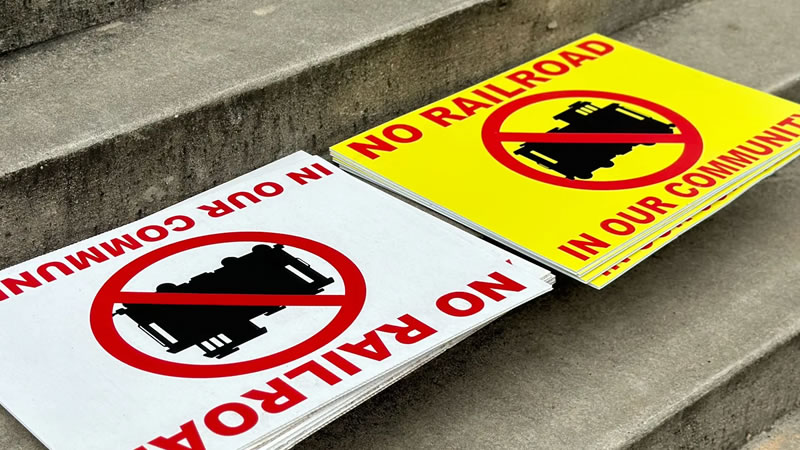Judge Rules in Favor of Georgia Railroad’s Land Seizure

(Photo by Aallyah Wright/Capital B/capitalbnews.org)
A Georgia judge has ruled that Sandersville Railroad can seize private land to build a new rail line, despite fierce opposition from property owners who argue it violates their rights. The ruling, delivered Tuesday by Fulton County Superior Court Judge Craig Schwall Sr., upheld the railroad’s ability to condemn a 200-foot-wide, 4.5-mile-long strip of land to construct the track, which would serve a rock quarry and other businesses.
For the landowners, many of whom have owned the property for generations, the decision is a devastating blow. They had appealed an earlier Georgia Public Service Commission ruling, hoping to block the land seizure under eminent domain laws. However, Schwall sided with the railroad, ruling that the project meets the legal standard for “public use.”
The Sandersville Railroad, owned by an influential Georgia family, plans to connect the quarry to the CSX railroad in Sparta, a rural town 85 miles southeast of Atlanta. The project’s backers claim it will boost economic growth, reduce truck traffic, and expand trade opportunities for Hancock County, one of Georgia’s poorest regions. But for the landowners, it’s a fight to protect what’s theirs.

“Every day that Sandersville isn’t coming onto our land and starting to build is a good day,” said Diane Smith, one of the landowners fighting the project. “But we won’t rest easy until we know for sure that they’ll never be able to take our land from us.”
The judge has temporarily frozen construction, giving landowners time to take their case to the Georgia Supreme Court. The legal battle is far from over, and the ruling could have broader implications for how private companies use eminent domain to seize land for railroads, pipelines, and power lines.
The Institute for Justice, a libertarian legal group representing the landowners, had hoped to use this case to set a precedent limiting eminent domain. They previously lost a major 2005 U.S. Supreme Court case that allowed the city of New London, Connecticut, to seize private property for economic development. Judge Schwall referenced that case in his ruling.
Meanwhile, Brian Brodrick, a lawyer for Sandersville Railroad, called on landowners to “return to the negotiating table”, insisting that the project would benefit the entire region. “The spur would have minimal impacts on neighbors,” he said.
But many residents are skeptical. Some believe the railroad’s main goal is to help the Heidelberg Materials rock quarry expand, which could mean more noise, dust, and truck traffic. Supporters argue that the new rail line would actually reduce truck congestion and move quarry operations farther from homes.
For now, the fight continues. If landowners succeed in appealing the ruling, it could set new limits on eminent domain. If not, Sandersville Railroad may soon begin laying tracks—on land its owners never wanted to give up.


